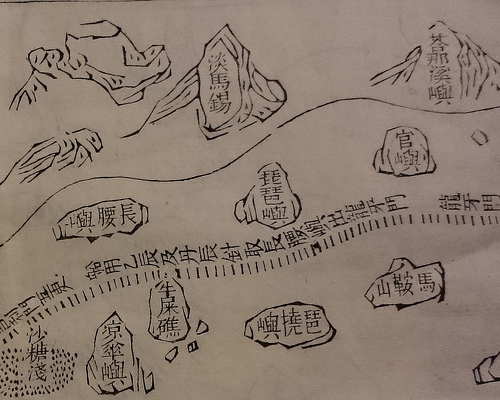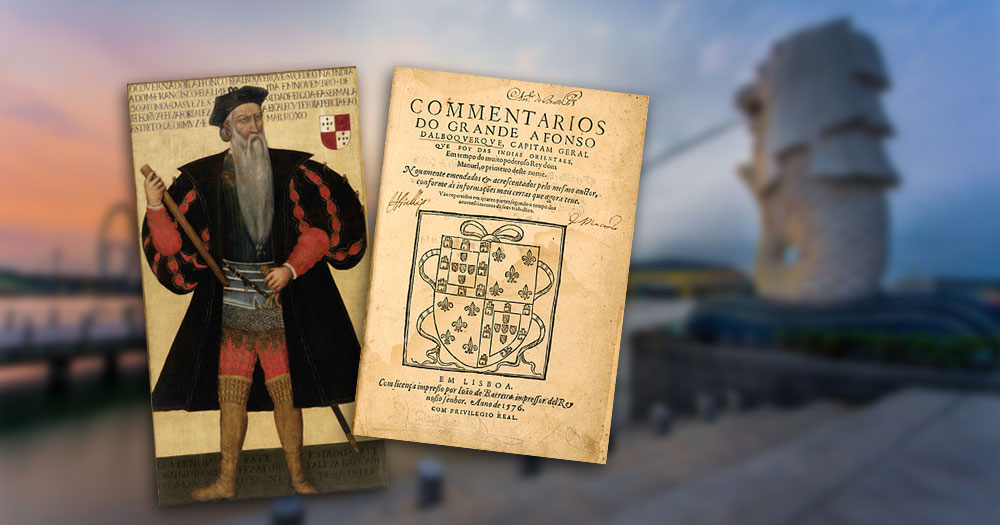Singaporeans ought to be familiar with the Malay myth about a supposed lion on the island that gave us the Sanskrit name, "Singapura".
For the more studious, they would also be familiar with "Danmaxi", supposedly the Chinese name of "Temasek", which is found in the navigational maps of Admiral Zheng He.
"Longyamen", translated as "Dragon Tooth Gate", was also used by Chinese trader Wang Dayuan in the 14th century to refer to the rocky entrance to present day Keppel Harbour.
 The Chinese characters for Danmaxi appears in the top middle. Image via Joshua Lee.
The Chinese characters for Danmaxi appears in the top middle. Image via Joshua Lee.
Singapore had a Portuguese name
But what most of us are unfamiliar with is the other name that a 16th century Portuguese traveller gave this island when he travelled here.
He called it "falsa demora", which literally translates to "the wrong, tricky or challenging place to interrupt one’s voyage".
"Falsa demora" was also translated, literally, to "you arrive there and it is not what you had expected", according to HistorySG.
Singapore sounded unappealing
The explanation was given by Afonso de Albuquerque in his 1557 account, the Commentarios do Grande Affonso d'Alboquerque, also known as The Commentaries of the Great Afonso Dalboquerque:
“It was a tributary of the king of Siam. Singapura, from whence this city received its name, is a channel through which pass all the ships from all regions, and which in the Malay language means falsa demora... [A]nd this name is very apt because sometimes, while the carracks are waiting there [at Singapura] for the monsoon [winds], such intense tempests strike that they [the carracks] perish."
Apparently, the name "falsa demora" comes from the tempests that wreaked sudden havoc on the sailing ships that were docked at Singapura.
 Afonso de Albuquerque. Via Wikipedia.
Afonso de Albuquerque. Via Wikipedia.
Afonso went on to describe how a visitor -- possibly Parameswara -- killed the captain of the town (perhaps the Temenggong) and usurped the throne for himself, making him the last King of Singapura:
"[After eight days he killed the captain of this town named Tamagi] and became “Lord of the Strait” and of the population [around] it.”
His account also gave us insights into what the city of Singapura was like in the 16th century during his visit:
"... a very large city, and densely populated: a testimony to this effect are the great ruins, which can be seen today that date from before the founding of Malacca."
According to Afonso, Singapura was past its heyday of a glorious emporium, with great ruins that were a former shell of its renown, though still densely populated.
Falsa demora, eventually didn't stick as a name.
But it would have sounded quite sexy if it did.
 #SG200 is not a celebration. It's a commemoration. What's the difference? Click the logo. Maybe these articles might help.
#SG200 is not a celebration. It's a commemoration. What's the difference? Click the logo. Maybe these articles might help.
If you like what you read, follow us on Facebook, Instagram, Twitter and Telegram to get the latest updates.
